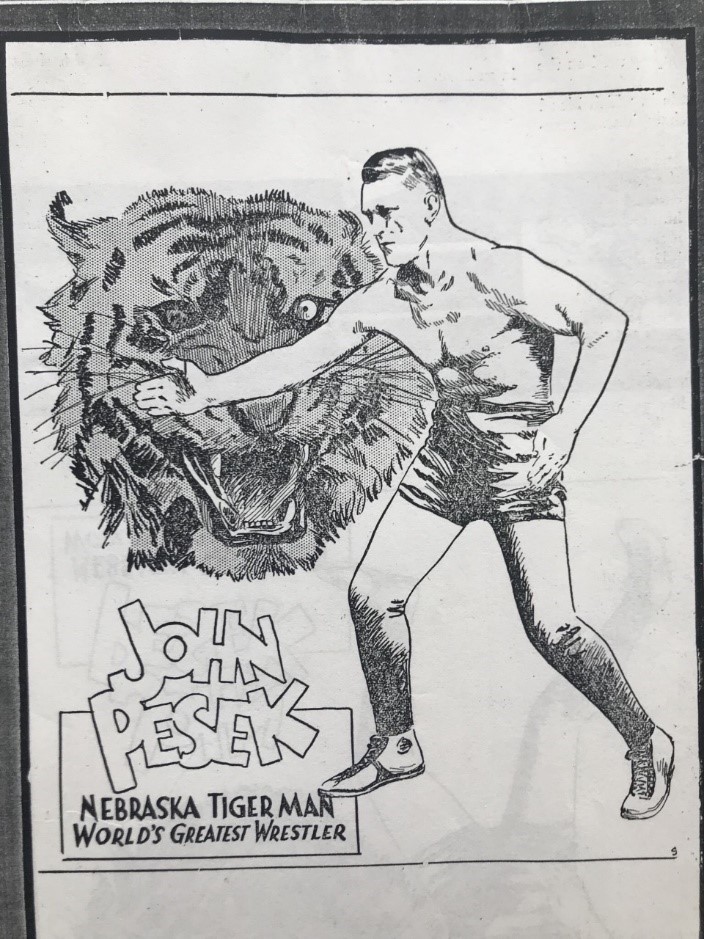
BEFORE MMA #3 - The Zenith of Catch-As-Catch-Can Wrestling - Tigerman John Pesek versus Nat Pendleton
If I could pick just one combat sports contest to travel back in time and witness live, it would be the side bet shoot- match between Tigerman John Pesek, the policeman- of the Sandow/Lewis camp and the Olympic hero Nat Pendleton which took place in Boston in 1923. These two grapplers represented two schools of early 19th century catch-as-catch-can wrestling. Pendleton practiced the highly competitive catch wrestling that emerged in the northeastern United States under such master grapplers as Hugh Leonard and George Bothner. The Tigerman sprang up from the mid-western rough and ready school, which was just a step or two removed from all-out frontier brawling. They also represented rival promotional groups that were vying to control the developing professional wrestling game.
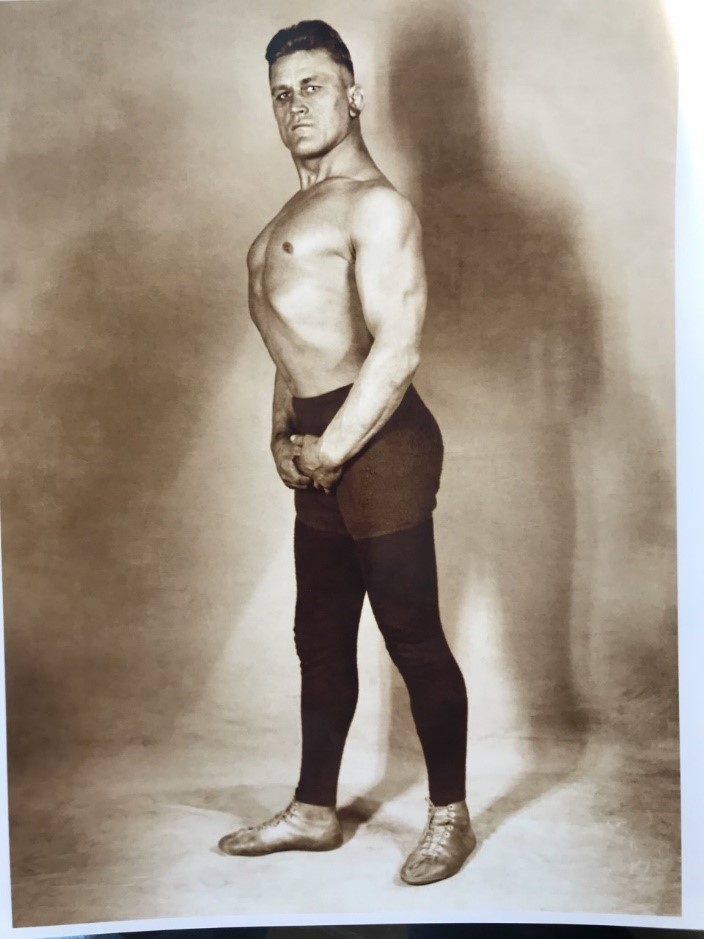
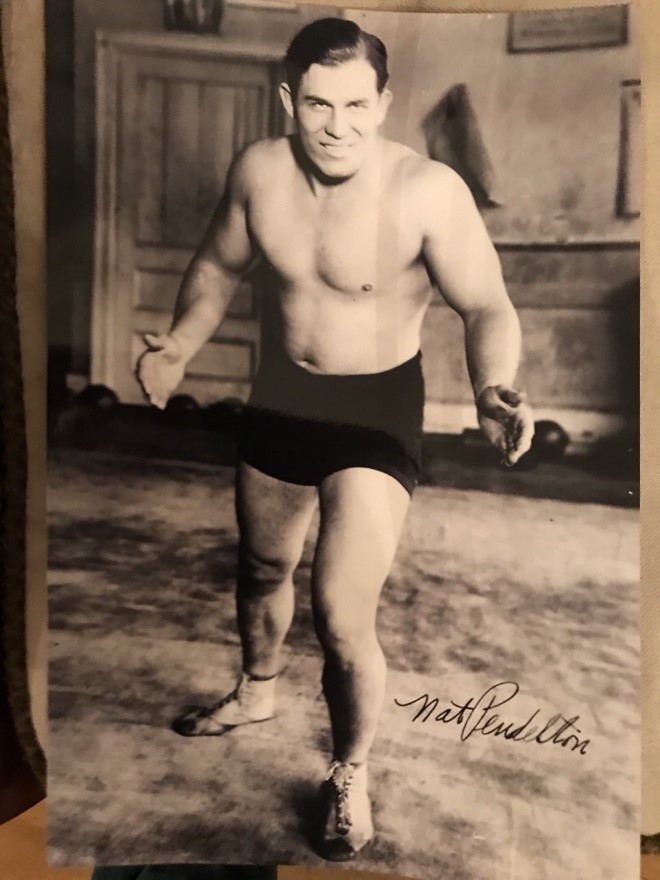
The Lancastrian promoters and their wrestlers sanitized this savage game, took out the non-grappling elements and created a professional sport, that would grow and spread to conquer the world. It became known as catch-as-catch-can, which was actually an old grappling term. The emphasis was on fast-paced action with wide-open wrestling, both upright and on the ground. There was no opening grip to be maintained as in many of the old regional styles. Holds could be seized on the head, body, legs or arms. The loser had to not only be taken to the ground but pinned as well.
Catch-as-catch-can found fertile ground in North America, where it blended with rough-and-tumble fighting and borrowed some elements of Japanese Jiu-Jitsu. Home-grown stars like Evan Strangler- Lewis, Farmer Burns, Tom Jenkins, Frank Gotch and Fred Beell and a host of others made it their own and fully established catch-as-catch-can as a force to be reckoned with. The next generation of American pro catch wrestlers, including Ed Strangler- Lewis, Joe Stecher, Earl Caddock and Jimmy Londos, took catch wrestling to even further heights. In the early 1920's the world heavyweight wrestling championship crown rested securely on the head of Ed Strangler- Lewis. Along with his manager and partner Billy Sandow they were determined to prove to the world that catch-as-catch-can wrestling, as they practiced it, was the greatest fighting sport on the planet. Sandow had been advocating his rough-and-tumble version of catch wrestling for years, and had helped train WWI American soldiers in self-defense tactics. Sandow was a colorful showman and a consummate promoter and with the tough-as-nails and powerfully-skilled Strangler Lewis at his side, they set out to prove that absolutely no one could stand in their way.
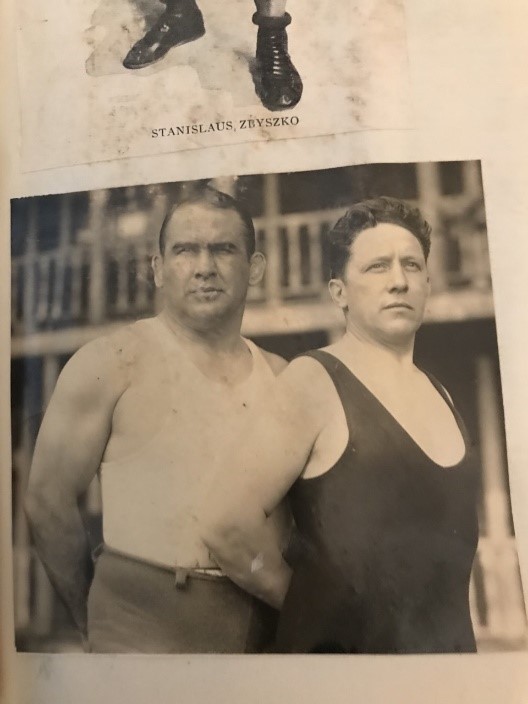
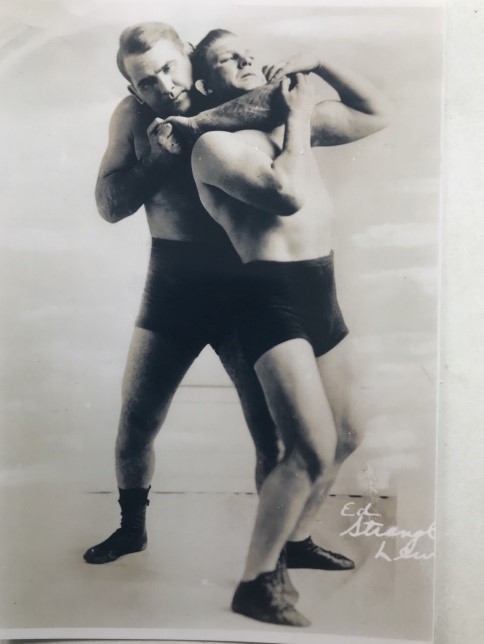
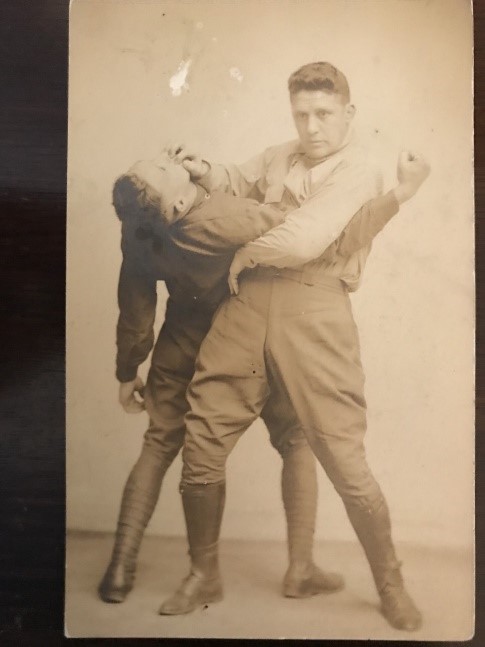
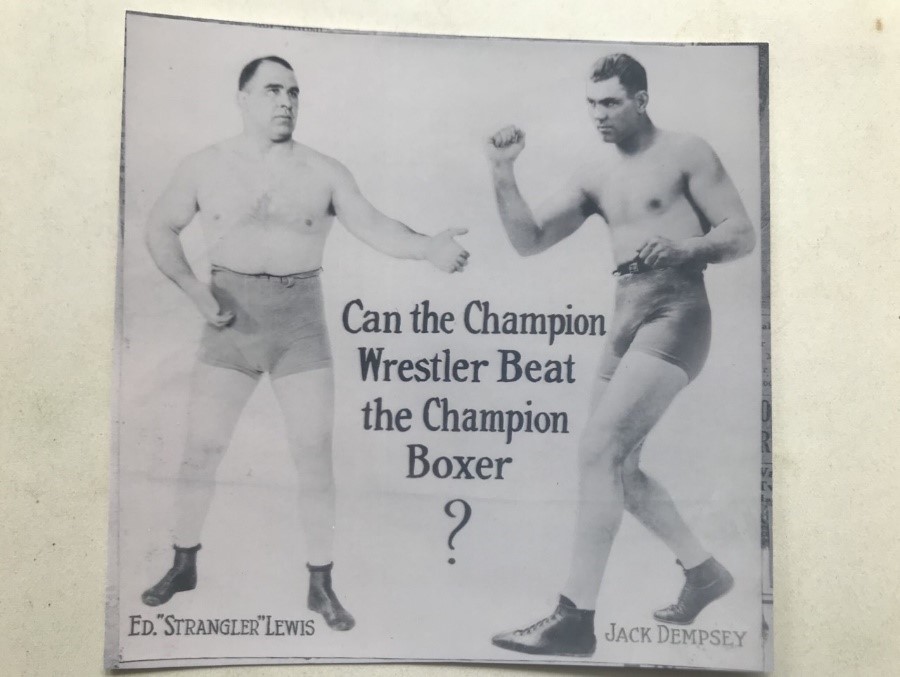
Pendleton was a 2-time Intercollegiate Wrestling Association champion in the 175-pound class, winning the titles in 1914 and 1915. He also represented the prestigious New York Athletic Club (NYAC) in AAU competitions. In the early days of the AAU, wrestling was dominated by athletic clubs and local YMCA chapters, rather than by college teams. At the 1915 AAU national wrestling championship tournament, held in Chicago, Pendleton was considered the defending amateur champ. However, he suffered a rare loss to the relatively unknown Earl Caddock. Representing the Chicago Hebrew Institute, Caddock proved to be a phenom in the amateur grappling world, and soon afterwards in the pro ranks. Undaunted by the setback, Nat continued on and took the 175-pound national title in 1916, and the heavyweight championship in 1920. He also won the 1920 Metropolitan heavyweight laurels in a popular annual tourney held among the New York area clubs.
With the backing of the NYAC, Pendleton won a spot on the U.S. wrestling team for the 1920 Olympiad. In the final try-outs, which took place at the 32nd Regiment Armory in New York City, he defeated three opponents; former West Point star Capt. A.M. Weyland, Camp Lewis' Private F.W. Ray, and Freddie Meyer of the Chicago Hebrew Institute. Meyer also qualified for the team, and would later go on to a successful pro mat career. With Europe still recovering from the ravages of the war to end all wars-, as a sign of solidarity, the Olympic Games were held that year in Antwerp, Belgium. The wrestling competition took place in August. Pendleton was entered into both the light-heavyweight Greco-Roman and the heavyweight catch-as-catch-can divisions. The Greco-Roman matches were held first, and Pendleton found himself disqualified in the opening round for utilizing an illegal arm hold. More at home at catch wrestling, he plowed through two opponents, a Finn and a Swede, and was set for the final match with Robert Roth of Switzerland. Pendleton was highly favored to bring home the gold. Roth was a strong competitor and the contest went to a decision. Nat had maintained the top position through much of the bout and was clearly the aggressor. Initially the referee awarded the decision to the American. Partisan judges quickly overturned the ref's call and declared Roth the victor and winner of the gold. Teammate Meyer commented, This was the worst decision ever. Pendleton was the winner of the contest, no ifs or buts.- (Encyclopedia of American Wrestling/Mike Chapman; Leisure Press; Chicago; 1990; page 82)
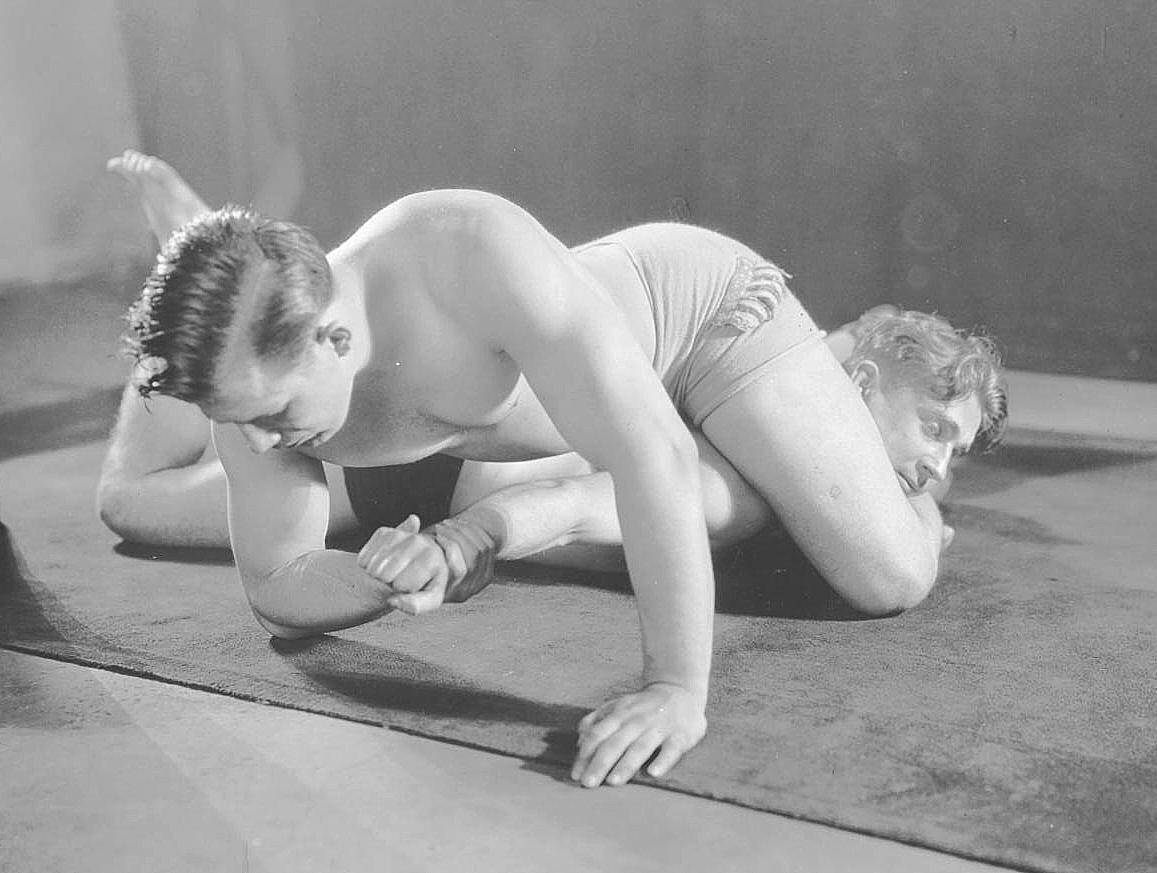
Despite his prowess and his popularity, Pendleton was finding it difficult to break into the top echelon of the heavyweight wrestlers and earn himself a title shot. The championship was firmly around the waist of Strangler Lewis. The Strangler, Sandow, and another tough wrestler with a creative flair named Toots Mondt comprised a powerful triumvirate that controlled the heavyweight crown. Since early 1921, Sandow and company had been keeping a ferocious wrestler by the name of John Pesek under contract to use as policeman- and unleashed him when needed upon unwanted and untested challengers like Armas Laitenen and Marin Plestina. Sandow's brother Max Baumann held, or at least attempted to hold the reigns as Pesek's manager. New York-based promoter Jack Curley, who was not affiliated at the time with Sandow and Lewis, took up the Olympic hero's cause and the ballyhoo engines started rolling. He seized upon Pendleton as a trustbuster- to challenge Lewis and keep pressure on his promotional rivals. In late 1922, Pendleton's manager Stuart Robson, issued a scorching challenge on his behalf calling out Lewis and further stealing the Strangler's thunder, throwing the gauntlet at Dempsey. Newspapers across the country trumpeted Pendleton's bold defi. A heavily circulated broadside declared, Ed 'Strangler' Lewis is hereby invited to step on the mat at any of Pendleton's appearances. Pendleton will take him on then and there for the total receipts of the house whether before or after the match with his scheduled opponent.- In an open letter, Nat taunted the Strangler for continually wrestling his same stable mates again and again in matches across the country. Pendleton challenged to meet Lewis in a finish contest, offering him $2500 just to sign articles of agreement and an additional $500 from his own pocket to cover his expenses. He asserted that he had backers ready and willing to wager even more money as a side bet. In an additional act of defiance, he offered to let one of Sandow's brothers act as his manager for the match(3). Pendleton closed with, I hate to annoy you, but it looks like this is the only way I can get a match with you, or let the public know that you don't want my game.- (Rochester Evening Journal; 11/1/22)
In his challenge to the boxing king, Nat declared that he could overpower Jack in a bare-handed rough-and-tumble match in less than ten minutes.- Dempsey was told to just show up at any wrestling card where Pendleton was engaged and simply enter the ring. No advance notice was required. If he failed to subdue the pugilistic champ in the promised ten minutes, Dempsey would be rewarded the entire night's gate receipts. (Evening News; 11/4/22) Not only was Pendleton questioning Lewis' abilities as a bona fide wrestler and the legitimacy of his matches, but he was going after the lucrative Dempsey mixed match prize.
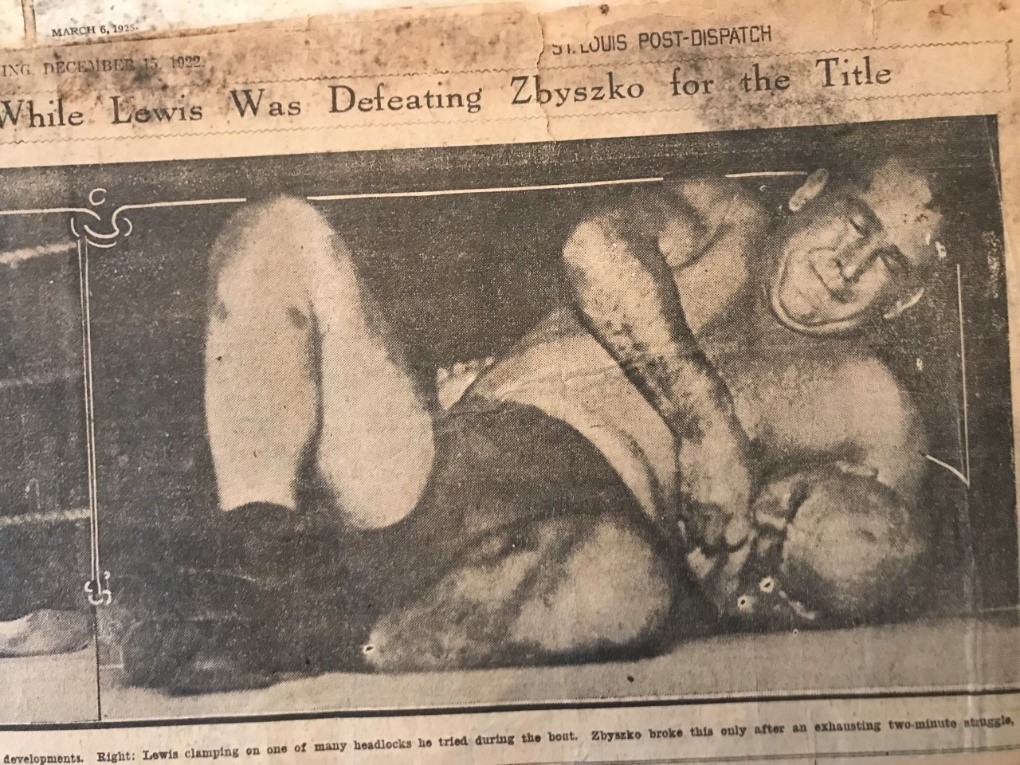
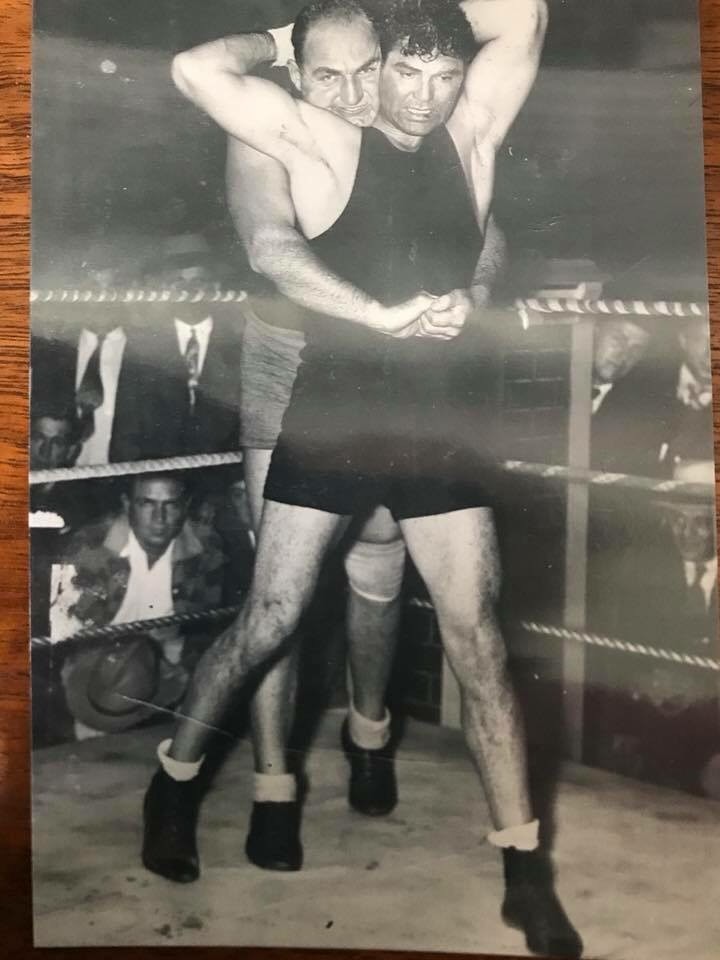
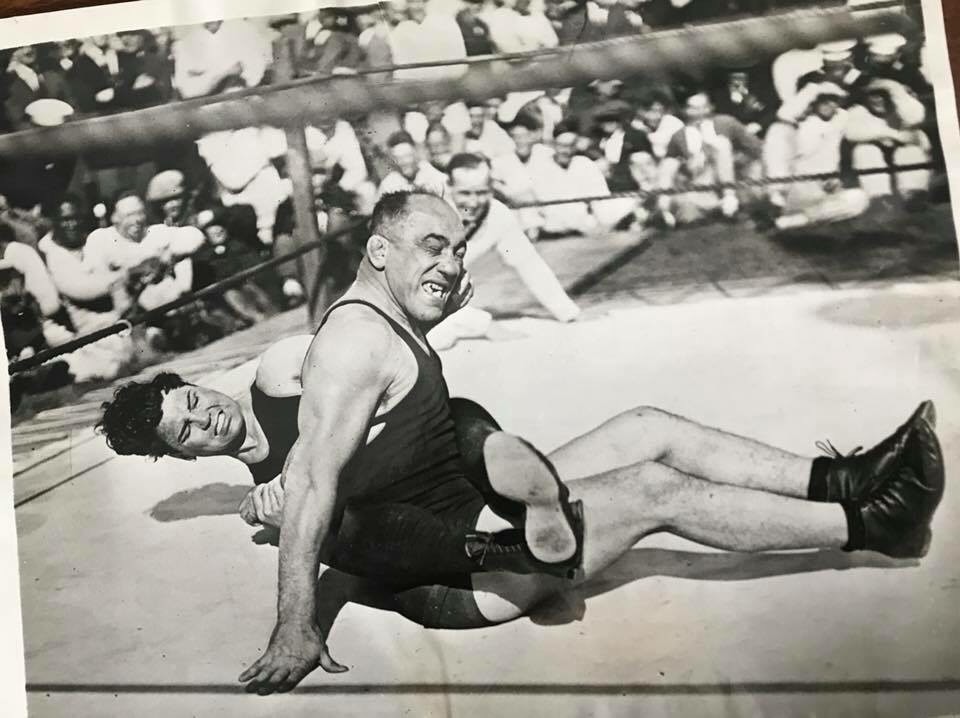
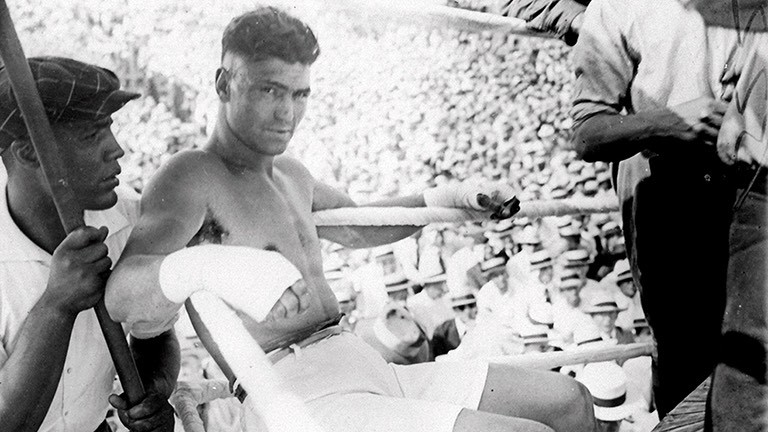
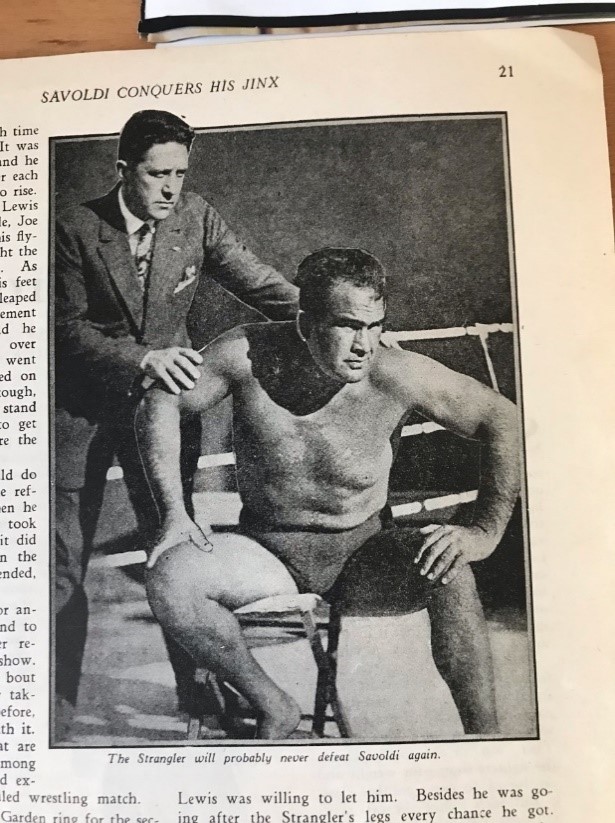
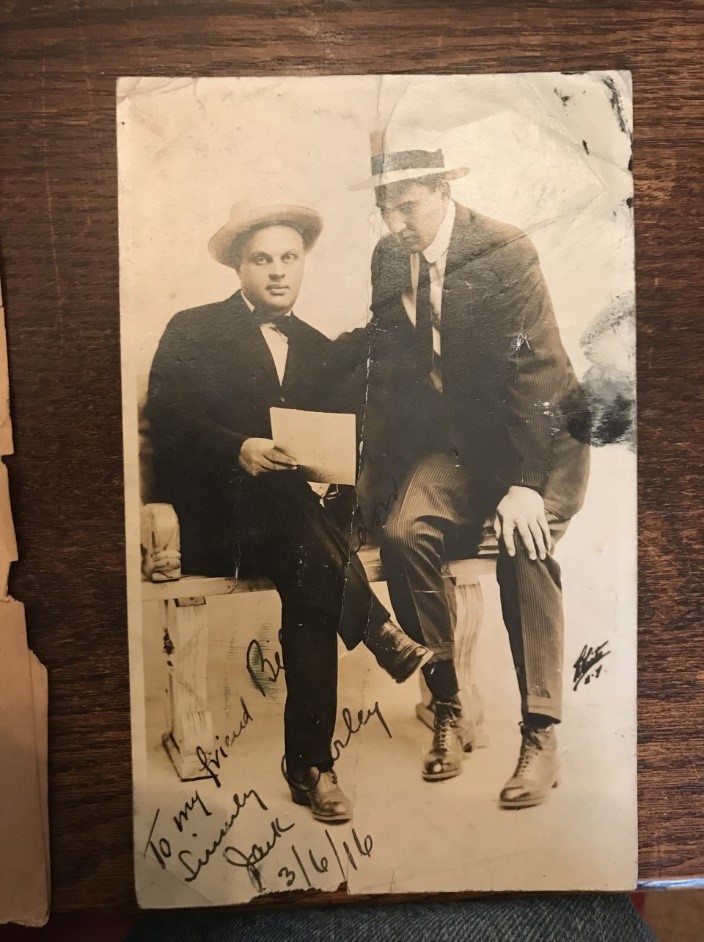
Pendleton eagerly expressed that he was ready and willing to take up both of Bowser's challenges, adding that after he disposed of Bowser and his Unknown-, he wanted to be booked to battle Calza. As things progressed, it was decided that Pendleton would first face the mystery man. All Nat requested was to be allowed to have a say in the selection of the referee. Each side would put up $2500 as a side bet. An additional purse would be contributed by the Howard Theater company, the managers of the venue for the proposed match. The money would be doled out on a winner-take-all basis. The victor would get the full wager, the promoters' purse, plus 50% of the gate. The loser received nothing, not even car fare home. Facing the Unknown- under handicap conditions gave Pendleton a decided advantage. First off, at 200 pounds, he'd have at least ten pounds on his opponent. It would fall upon the Unknown- to be the aggressor and force the match. All the former amateur champion and world-class catch wrestler had to do was wrestle defensively and keep from being pinned. The bout was carded for January 25, 1923 at Boston's Grand Opera House. Speculation ran rampant as to the identity of Bowser's Unknown.- Two days before the showdown it was revealed that Pendleton's adversary was none other than John Pesek, one of the fiercest gladiators of matdom.
John Pesek was a Nebraska farm boy and a natural-born wrestler. He recalled, I have been wrestling as long as I can remember. When I was a boy going to school, I learned to look after myself, and a little later I wrestled with the cowboys out on the prairies. We knew little or nothing about rules. The hard ground was the mat, and it was always rough and tumble-Rafferty's rules, where the one that could last the longest was the winner.- (Wireless Weekly; 11/1/29) After beating all the locals who fancied that they could wrestle, everyone in the itinerant threshing crews, and a notorious town bully, Pesek began making a name for himself in the pro ranks and soon was reputed to be one of top men on the circuit.
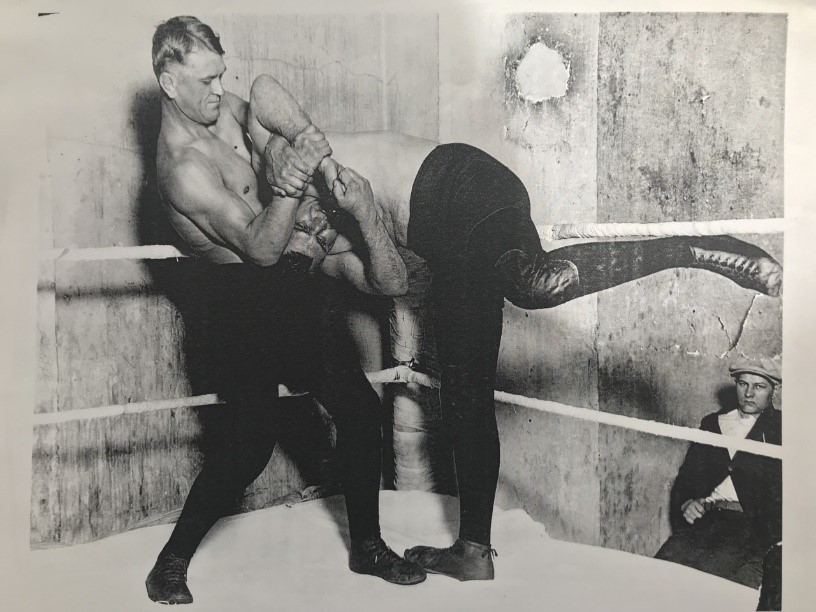
Both Pendleton and Pesek went into serious training. Pendleton's part of the side bet was raised by Curley, Curley-aligned wrestlers, and a proud group of Columbia University students. It was thought to be an absolute impossibility that anyone could throw Pendleton for two straight falls within the stipulated time. Confidently, Bowser offered to cover all additional bets at 10-to-1 odds, up to $25,000. Ticket sales were hot. Fans flocked in from New York and Philadelphia. Pendleton purchased a block of fifty seats for his friends and supporters. Wrestlers and out-of-time promoters gathered for what they knew would be an epic shooting- contest. The case can be made that what transpired was one of, if not the, greatest catch-as-catch-can matches of all times.
Veteran wrestler Cyclone Burns, the ring name of John Carlson, was mutually agreed upon to act as the referee. Police Gazette catch-as-catch-can wrestling rules would be strictly enforced. Foul tactics would not be tolerated. An offending wrestler would be given just two warnings. Any additional fouling would result in a prompt disqualification. In the case of the grapplers rolling off the mat or into the ropes they would be restarted in the center of the ring in the referee's position. Top man would be placed at the ref's discretion. If, while upright, they fell over the ropes or became entangled in them, they'd be restarted in a standing position, ring center. Strangling and chokeholds (4) were barred, as was punching, kicking, eye-gouging, hair-pulling and biting. A fall would be constituted by a three-second pin or by verbal concession. The agreement was for a seventy five-minute time limit, during which Pesek was required to achieve two falls. If he failed in this task, Pendleton would be declared the winner.
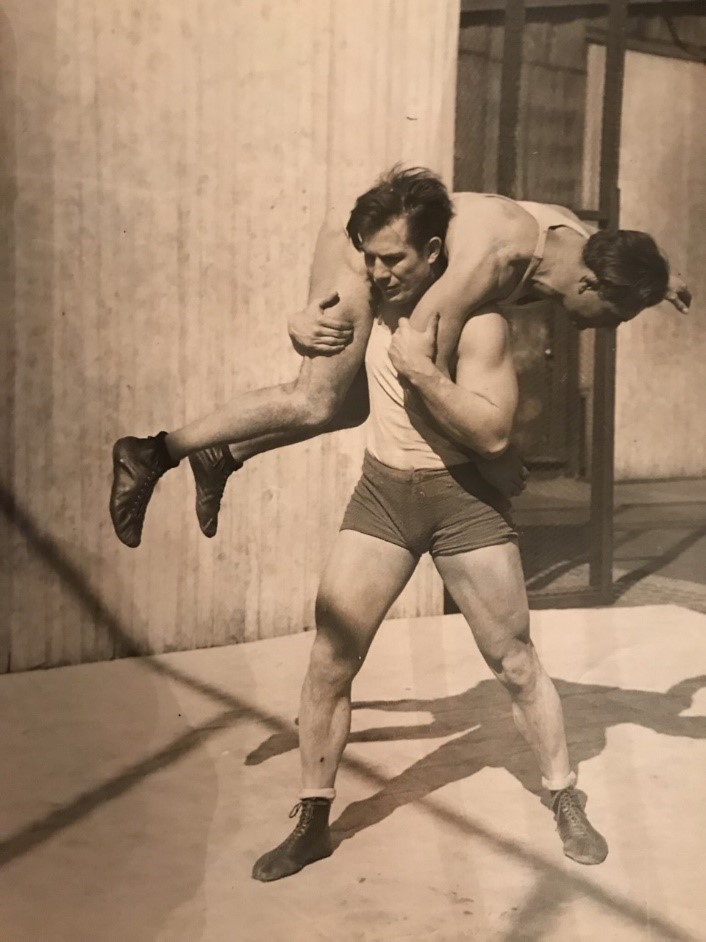
John Pesek came into the match at a hard-trained 184 lbs. A sports writer called the contest, the most important match staged since Lewis won the championship at Wichita last year...And strangely no title is at stake.- (Wichita Beacon; 1/14/23). As the bout began, the Tigerman charged right into Pendleton like a midwestern cyclone. No stalling, no hesitation. Pesek forced his opponent into the ropes, maneuvered behind him, and took him down to the mat. From a side position, Pesek began going after a double-wristlock, his trademark hold and one of catch wrestling's staple grips. Pendleton desperately fought back, exerting every bit of his energy and strength to break the hold. He rolled and thrashed wildly about the canvas. With calm and cool calculation, Pesek maintained the wristlock and added a head scissors to further subdue his antagonist. Pendleton was still frantically working to stave off a fall. With a herculean effort he managed to go into a bridge, elevating his shoulders off the mat and countering the leverage Pesek was applying on his arm and head. The Nebraska Tiger's combination of holds was loosened up enough that the Olympian powered free and scrambled out of danger. The notably partisan crowd roared in approval of Pendleton's escape. Continuing on the offensive, Pesek sparred for holds and kept the pressure on Pendleton. As they grappled around the mat, Pesek went after another wristlock. He locked one on, but Pendleton broke it. The enthusiastic crowd hollered and cheered. Thirty non-stop minutes of mat action had elapsed and yet again a spontaneous eruption of support for Nat broke out from the assembled throng. He was holding his own and had resisted all efforts thus far to throw him.
John switched gears and started going after his opponent's lower limbs. First applying a leg scissors, he stealthily bided his time, waiting for an opening. Like a flash he switched to a toe hold on the right foot. Pendleton instinctively grabbed one of Pesek's feet and attempted to secure a toe hold himself. It was a battle of the toeholds.
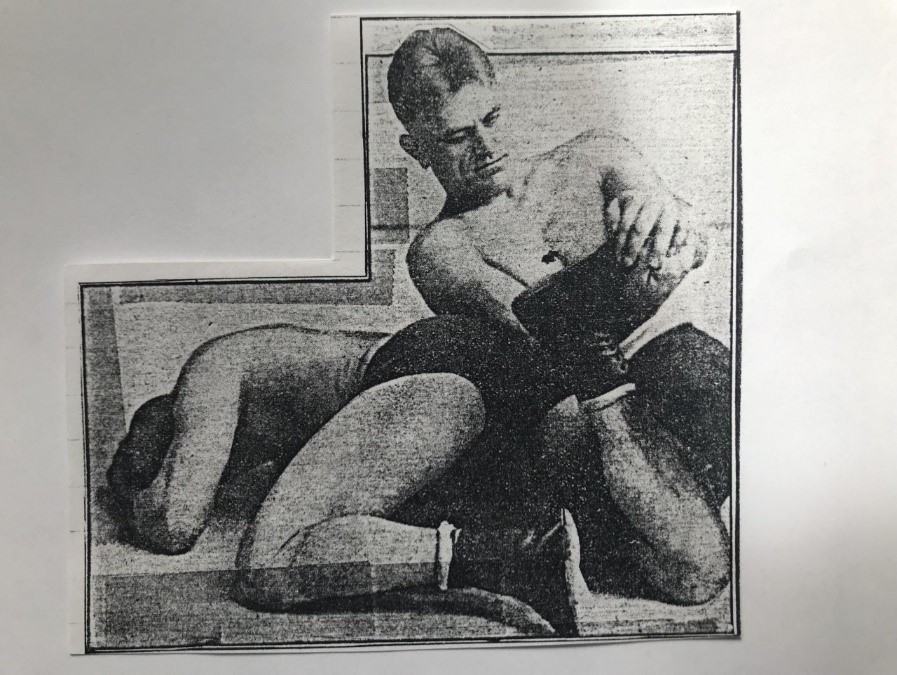
As the combat resumed, Pendleton was noticeably weakened and favoring his right foot, though still as game as a fighting rooster. But like his tiger nickname, Pesek smelled a kill- and went after his opponent with a fury. Staying on their feet, he bulled Nat around the ring and secured a wristlock. Pendleton broke it before it could be cinched up. The Olympian attempted to launch an offense a few times, but couldn't get very far.
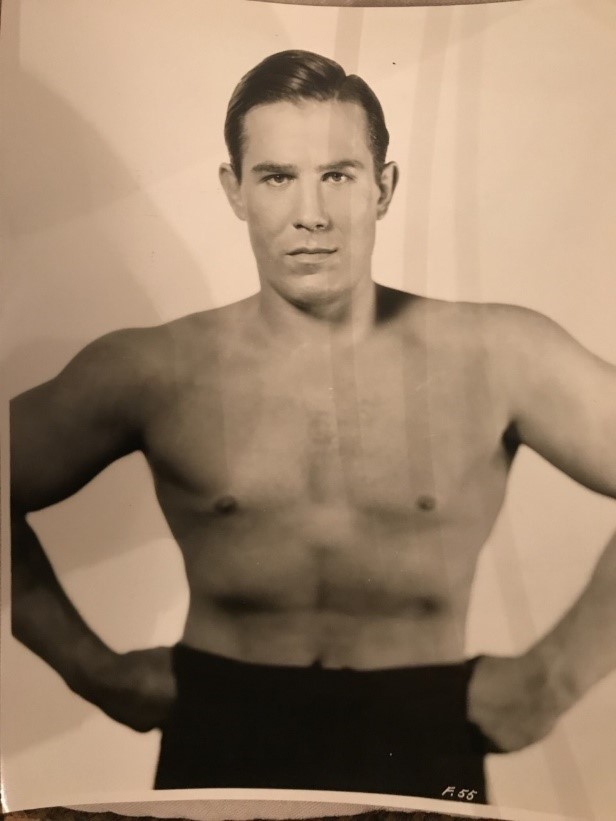
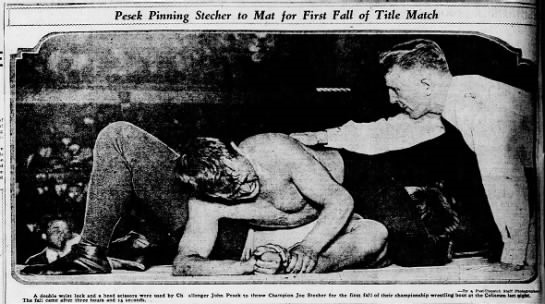
It was announced that Pendleton would return to Boston within a few weeks for the second proposed handicap match against Bowser, but all interest seemed to have been lost and no more was heard about it. No doubt, Pendleton needed some time to recover from his battle wounds. The Nebraska Tigerman walked away with $8,000, the side bets and the purse, which was a very large payday for a pro matman in that day. It was said that Sandow and Bowser cleaned up a whole lot more in betting action.
Nat Pendleton never got a rematch with Pesek or a championship bout with Lewis or any other title-holder, though he would continue to issue challenges. As to a mixed match with Dempsey he composed an article How I Could Whip Jack Dempsey and posed for a series of photos with Paul Berlenbach demonstrating his tactics against a boxer. It was published in the September 1924 issue of Muscle Builder magazine. Neither Pendleton or Lewis ever did get the much-ballyhooed contest against Dempsey. The case is made that Dempsey was more than willing to have a rough-and-tumble go with Lewis, but his cautious manager Jack Doc- Kearns simply milked the publicity but had no intention of letting it actually take place. Interestingly enough, Pesek tried to goad persistent-Dempsey challenger Harry Wills into an all-in, rough and tumble- for a $25,000 bet, but his defi fell on deaf ears. Dempsey was accused of drawing the color line- against Wills, the Black Panther-, but the Tigerman had no such qualms.
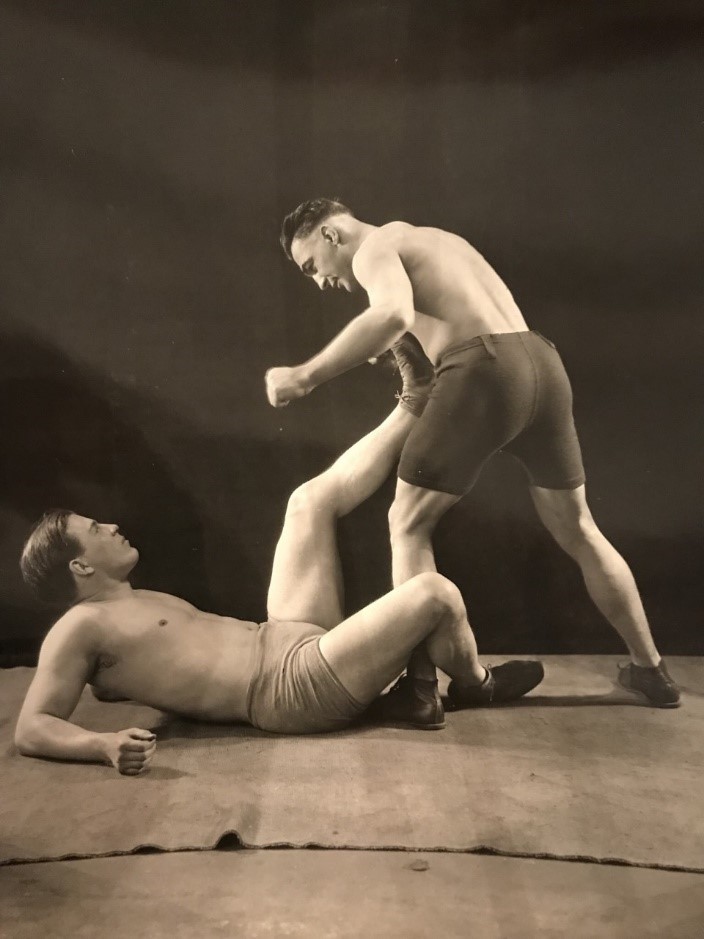
Following his victory over Pendleton, Pesek continued in the service of Sandow and Lewis as both a training partner and as a wrestler on their cards across the country. The threat of having to face Pesek was enough to ward off most troublemakers. But his policeman- role had to be utilized a couple years later when he was called on to take care of Farmer Burns' shooter- Charley Hanson, which he dutifully did in an Omaha contest. Yet again, he apparently was brought into action for a Los Angeles match in 1926 to pull a double-cross and humiliate Lewis' chief rival Joe Stecher. But that's another story. By the end of 1926, Pesek had completely split with the Sandow camp. The tale goes, that both Tiger John and Toots Mondt were growling at one another as to which one was the toughest guy in the house. While in Kansas City helping Lewis prepare for a match, they decided to settle the issue and agreed to square off in a private gym shoot.- Pesek won, but apparently Sandow was not pleased with their squabbling. One thing led to another and Pesek went on his merry, independent way. Many years later after all parties had gone their separate paths, Billy Sandow went on record, saying, Lewis was a great wrestler, but the greatest of all is Nebraska's own John Pesek. I've traveled the world and handled all sorts of men. Pesek is the greatest scientific wrestler I have ever met.- (Ravenna News; 2/22/45) Farmer Burns once remarked that, Pesek is the best in the business today...Frank Gotch would have given the Tigerman lots of trouble in his heyday...Pesek's superior speed and footwork would have given him the title had the two met when Gotch was in his prime.- (Charleston Gazette; 12/12/32) Tigerman John Pesek was truly one of a kind.
Endnotes: This article is dedicated to the memory of the late Mary Lee Pesek, the Tigerman's daughter and a dear friend. Photos used are from the Pesek family and Sandow family collections, as well as from the author's collection. For more information about Pesek and Pendleton the following biographies are highly recommended:
The Nebraska Tigerman The John Pesek Story/ Geoff Pesek; and Pendleton The amazing story of Columbia's wrestling Olympian and star of Hollywood/Mike Chapman. For ground-breaking information about the origin and development of professional catch-as-catch-can wrestling see The Story Of Catch Lancashire Catch-As-Catch-Can Wrestling/Ruslan Pashayev. Steve Yohe's Ed Strangler- Lewis Facts within a Myth covers the life and times of the Strangler and fleshes out all the details of the time period during which the Pesek/Pendleton contest occurred. Enough cannot be said about the role of Billy Sandow in professional wrestling and combat sports history. Sandow truly believed in the martial art of catch-as-catch-can wrestling. Late in his life, it was reported that he was eager to find a writer to go through all his memorabilia crammed in suitcases and scrapbooks and pen a book telling his story. He passed away in 1972. His tale is yet to be told.
1.) Among the Lancastrian catch-as-catch-can wrestling pioneers that traveled to North America were Joe Acton, Edwin Bibby, Tom Connors and Jim Parr. 2.) Stanislaus Zbyszko beat Strangler Lewis-5/6/21, Madison Square Garden, NYC, referee: Dr. B.F. Roller; Stanislaus Zbyszko beat Strangler Lewis-11/28/21, Madison Square Garden, NYC, promoter: Tex Rickard; Strangler Lewis beat Stanislaus Zbyszko-3/3/22, Wichita, KS; Billy Sandow issued a challenge to Jack Dempsey for a mixed bout on behalf of Strangler Lewis and posted $5000 with the sports editor of the Nashville Banner. Dempsey's manager Doc Kearns immediately responded that Dempsey was ready to meet him in either a mixed match or in a wrestling bout-3/16/22. 3.) In addition to Max Baumann, another Sandow sibling Julius Baumann was involved in pro wrestling as a promoter in Rochester, NY. 4.) Choke and strangle holds were part and parcel of North American catch-as-catch-can wrestling from its earliest days in the 19th century, and since colonial times in rough-and-tumble fighting. By the 1910's their use became frowned upon due to public outcry about the brutality of wrestling matches. By the 1920's, chokeholds were generally deemed illegal. One exception was in mixed-style contests between wrestlers and jiu-jitsu experts. Choking out an opponent was known in olden times in Lancashire, England as stopping the smoke of the chimney.-(Blood And Guts/ Don Ateyo; 1979)
Mark S. Hewitt/Combat Sports Research Laurel, DE 2019 (last update 11/18/19)


